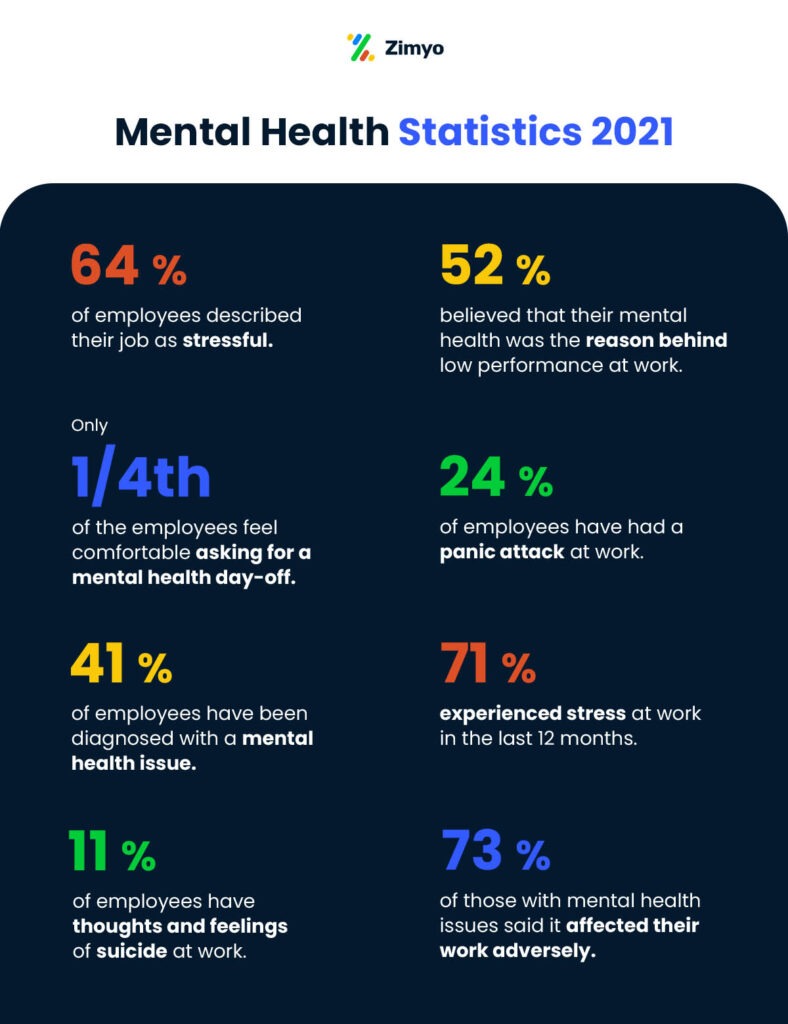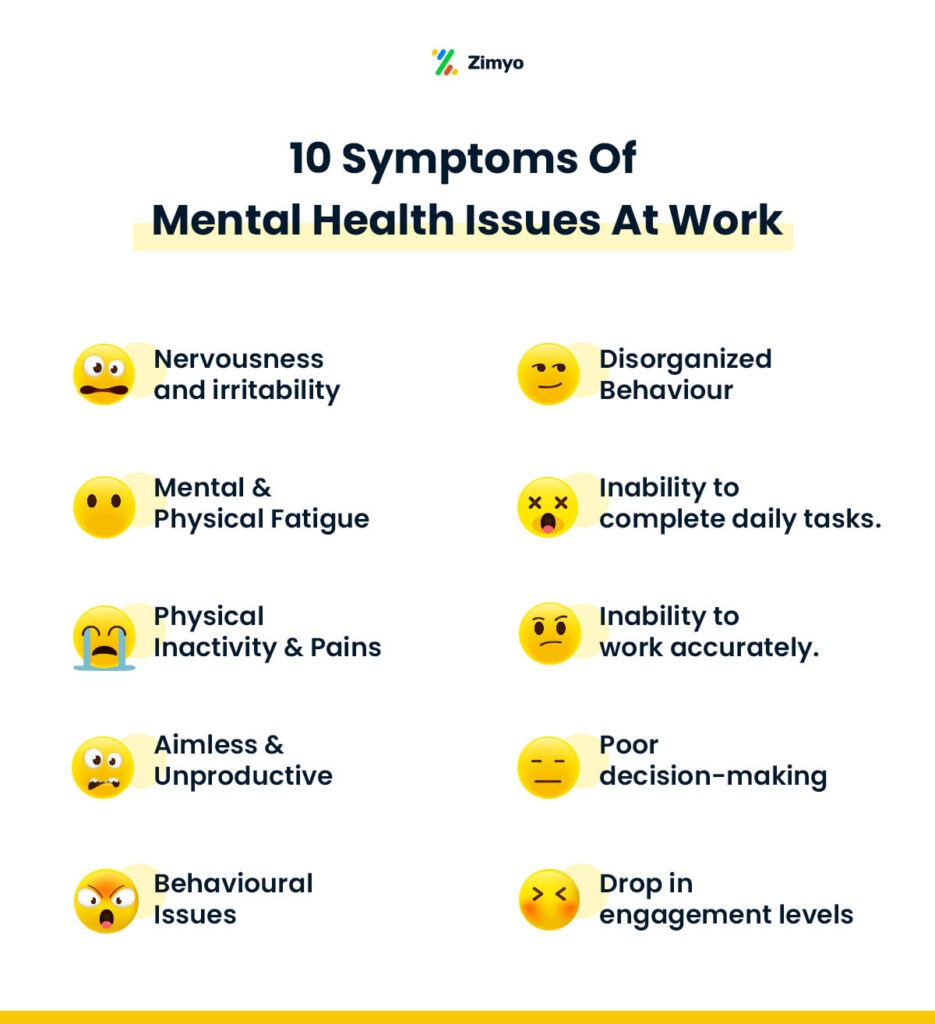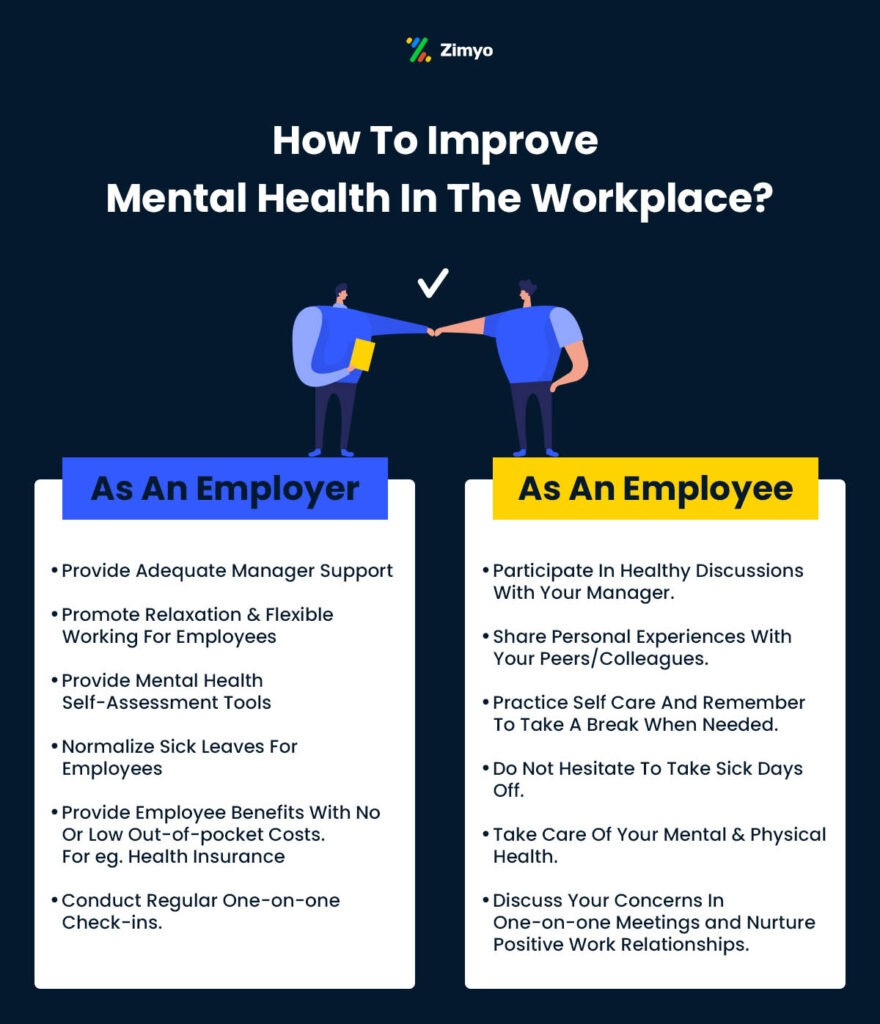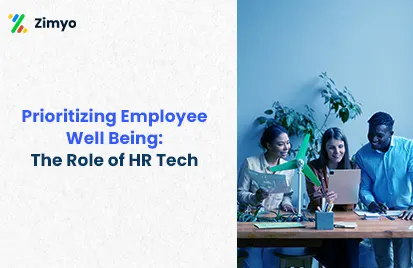Mental health is important- there’s no denying that. For decades, there has been a lot of discussion, debate, and awareness around mental health. Recently, the topic again came into the limelight after the world’s best cricketers and athletes, such as Simone Biles, Naomi Osaka, and Ben Stokes prioritized their mental health in the Tokyo Olympics.
The Tokyo Olympics have made one thing clear that people from all walks of life suffer from some kind of mental health issues- be it a high-performing athlete or an employee. The situation of Simone Biles or any other athlete is no different from what employees suffer at the workplace.
Continuous demand for high performance, work-family conflict, poor workplace relationships, job insecurity, and a lack of recognition can cause an employee to feel worried or anxious. Therefore, it’s high time to prioritize mental health over anything else.
As we talk about promoting mental health in the workplace, many relevant questions come up:
- Is maintaining mental health a need of the hour?
- Does your organisation have a policy on work-life balance?
- Is there a process in place to encourage managers to provide a psychologically safe workplace?
- Do people in your organization have a common understanding of a mentally healthy workplace?
Do these questions sound familiar? If they do, you’ll get all your answers related to mental health at work in this blog.
Why Is Mental Health Important?
Isn’t it a fact that when you inquire about someone’s health, you’re only considering their physical well-being?
Is it enough to be physically fit to be considered fit? The short answer: No.

More than 300 million people across the world suffer from depression, according to the World Health Organization. Many of them are afflicted with anxiety problems. According to another study, one out of every 6.8 workers has mental health issues (14.7 percent ).
According to a recent Qualtrics research, about 44.4 percent of remote workers during the COVID-19 epidemic have experienced a drop in their mental health at work.
Mental Health In The Workplace
Because having a psychological disease carries such a significant stigma, people prefer to suffer instead of talking about it. And in the workplace, this stigma is far more widespread.
Employees are far more hesitant to speak because of the fear of compromising their careers and losing their jobs. Fear of harassment and discrimination by coworkers is another important factor for keeping it quiet.
As a result, the necessity for timely treatment is overlooked and unacknowledged. This is detrimental to the individual’s health as well as his/her career and performance.
As a manager, you must encourage employees to speak up and share their stories to foster a healthy workplace.
Employees will feel more comfortable revealing their problems with you if they believe sharing about mental diseases will not jeopardize their careers.
Furthermore, once they have received support from their leaders, they may urge their peers to speak out about their problems and seek help.
Employees will willingly start coming forward with their concerns and help establish a healthy work atmosphere once you’ve successfully regulated and normalized talking about mental health in the workplace.
How Can You Recognize The Problem?
Employees with mental conditions frequently have difficulty focusing. Their performance suffers as a result of their lack of attention, and their productivity drops down too. However, is terminating them the appropriate thing to do? Certainly not.
Rather, it is far more important to support them. Furthermore, they will become devoted to you if they know you stood by them in their toughest times.
Therefore, you must not wait until the panic attack occurs. But how do you spot the signs and symptoms early on?

Behavioral Changes
- While conversing with friends or going about their daily tasks, you’ll notice variations in their moods and conduct. Anger and impatience are two common anxiety symptoms that you may notice.
- Another symptom to keep an eye out for is erratic conduct. Their moods may fluctuate between sullen and extremely happy. They may engage in things without understanding the implications.
- Their performance will begin to decline. This could be due to stress, a lack of work-life balance, or an inability to focus.
- They will begin to isolate themselves from social situations and won’t want to collaborate or work in groups. This will lead to lesser participation in any activity.
- Regular disagreements with their coworkers or the manager might grow into a usual affair. These may arise as a result of conflicts and result in intense debates.
- They might have memory problems. They’ll have trouble recalling information. This syndrome is caused by things such as high stress or a traumatic experience.
- They will be preoccupied and confused due to their inability to remember things. This could cause them to be perplexed about their regular behavior.
Lack of confidence, indecisiveness, and increasing absenteeism are further signs to watch for. A combination of mental health issues in the workplace might hurt the company’s bottom line.
Physical Changes
- They’ll appear exhausted and worn out. Depression, for example, might lead to weight loss and exhaustion in the long run.
- They may appear nervous and distant from the things they used to appreciate.
- Their eating habits will change as a result of this. It will either substantially grow or diminish. Stress can also lead to substance abuse, such as excessive drinking or smoking.
- They may have frequent headaches and become unwell.
- Sleep deprivation is a prevalent issue among people dealing with these difficulties.
Promoting Mental Health In The Workplace
Businesses have never been more conscious of the significance of mental health at work than they are right now. But this alone does not equip managers to deal with it any better in the workplace nor does it help employees get the support they need.
According to a recent survey, 30% of employees believe they are unable to openly discuss their management concerns. Every company has a corporate duty to ensure that this impediment is removed. Mental health awareness alone is insufficient; it must be accompanied by action.
Here are a bunch of things you can do, as a manager to support mental health in the workplace:

Learn About Mental Health Issues
Mental health problems touch us all; we just have to get better at knowing about them. Mental health concerns are the leading cause of long-term absenteeism in one out of every five businesses.
This begins with mental health and stress management training for yourself and your employees. Because anxiety and depression are so frequent, everyone must understand how to recognize early warning symptoms and cope with stress.
Some warning indicators are more visible than others, and the nature of workplace connections can determine whether or not proactive support is provided.
Build a culture of trust and support, and strive to get to know your staff on a personal level. You’ll be able to identify any behavioral changes with this emotional intelligence, and – perhaps even more coworkers will be inclined to share what they’re experiencing.
Understand The Causes Of Workplace Stress
While stress isn’t a disease, it can lead to illnesses like anxiety and depression, which are two of the most common employee mental health issues. Insomnia, tiredness, a loss of attention, and a slew of other major physical health issues can all result from stress. The six basic causes of work-related stress should be understood:
- The Demands Of The Position – When employees can’t manage the amount of work they have or the type of job they’re meant to complete because of the role’s demands.
- Amount Of Control Over Work – When employees are dissatisfied when they have less (or no) input in how and when they do their work.
- Manager’s Support – When employees feel they cannot speak to their bosses about matters that affect them.
- Workplace Relationships – When workplace relationships get worse, other problems such as bullying, personal grudges, and discipline issues might arise.
- Policy Changes & Management – When employees are unclear or apprehensive about changes in the firm, change, and how it is managed.
Monitor Employee Performance
Employee well-being has a direct impact on the employee engagement, motivation, and productivity at work. Keeping an eye out for changes in employee productivity will help you provide proactive support to anyone who is experiencing difficulties.
A performance management software can automatically process and share this information for you, so it doesn’t have to be obtrusive or time-consuming. Keep a watch on the following items in particular:
- Hours and overtime – Does anyone consistently stay late or work unscheduled overtime? It could mean they’re having trouble focusing, or it could mean they’re overly involved and on the verge of mental fatigue. Any disruption in a good work/life balance should be taken seriously.
- Workload – Is there any member in the team who is feeling overburdened or is given more work than he/she can handle every week? Do they have too many responsibilities?
- Downtime – Is anyone taking advantage of their vacation time? Do they take longer breaks, or do they not take any at all? Is anyone available to work on the weekend??
- Productivity – Is anyone making uncommon mistakes or taking longer than usual to complete tasks?
- Absence – Many employees report to work physically ill because they believe they are unable to request time off to maintain their mental health. To normalize mental health management, keep an eye on absenteeism and create a friendly policy of mental health sick leave.
Normalize Conversations Around Mental Health
Leadership may help or hinder a company’s mental health strategy, as well as have a direct effect on the occurrence of mental health issues. According to research, one of the most regularly stated factors in employee mental health issues, anxiety, and depression is a lack of managerial assistance. It almost eliminates psychological safety at work, making it less likely that people will seek assistance.
You must create a safe, non-judgmental environment in which individuals can openly discuss mental health and openly seek help when they require it. As a manager, this necessitates being personable, empathic, and able to normalize employee mental health discussions.
One-on-one check-ins are a good place to begin, but there are other methods to provide a safe environment for people to talk about their mental health concerns, raise concerns, and offer advice. These can include the following:
- Regular one-to-one meetings
- Focus groups
- Staff forums and surveys
- Monthly performance review meetings
- Team breaks
- Setting up internal channels for conversations.
Prioritize Wellbeing Throughout Your Company
Employee mental health support must be strategic – closely knit into the very fabric of how your company runs, acts, and thinks – to be successful. The first step is to communicate that you will support mental health at work on the same conditions as physical health, which means that you will allow employees to take sick leave to maintain their mental health.
It also entails investing in the development of an open, supportive culture in which people feel comfortable seeking help and expressing their opinions.
Beyond that, you’ll need concrete policies and methods to guarantee that people get the help they require. This entails establishing clear pathways for voicing concerns, safeguarding spaces for two-way communication, giving access to tools and information, ensuring that you address employee mental health issues including mental health in employee inductions and training. In a word, it means incorporating mental health support into your company’s DNA.
Practice What You Preach
Leadership behaviors have a significant impact on staff behavior. No matter how many excellent policies you promote, unless you follow them yourself, your staff will not feel empowered to do so. Leading by example is one of the most effective methods to communicate to your employees that their well-being is important.
To urge employees to do the same, take complete lunch breaks, and work reasonable hours. Stepping off at the end of the day promotes a good work/life balance, as does fighting the urge to respond to emails late at night, on the weekends, or while on vacations.
If you take mental health sick leave, make it known that you’re doing so to normalize taking care of yourself. Set the tone for your team by demonstrating how essential downtime is to you — you’d be shocked how valuable this visible confirmation can be.
Offer Personalized Support
There is no one-size-fits-all solution to mental health issues; management for one employee may look substantially different from that of another who is struggling with the same condition.
As a result, you need to tailor your assistance as per your specific circumstances.
While everyone should get constant feedback and guidance, you must listen to others to know how to adjust your management style to match their needs. Ask them what they want and need from you to achieve their objectives, as well as what they think of the help you now provide.
As a manager, there are a plethora of options available to you; here are a few options to consider:
- Offering training and development programs.
- Mentorship or a buddy system for informal help.
- Enhanced supervision to aid in the management of workloads and hours.
- More one-on-ones or feedback channels.
- Recognizing, reflecting on, and announcing favorable accomplishments.
- Updating the structure of feedback and its delivery.
- Remote and flexible working options are available.
- Establishing support groups for those with mental illnesses.
- Creating a safe environment for employees to take a break in the office.
In Conclusion
You can’t wait until the point of saturation. Because of the stigma associated with mental health at work, your employees may be hesitant to discuss it with you.
You might not be able to tell if someone isn’t doing well or if they appear to be seriously ill. Be empathetic and inquire about employee well-being in your organisation. A simple “How are you?” can have a bigger influence on someone than you realize.
Also Read: How Can Businesses Deal With The Second Wave of Employee Burnout







